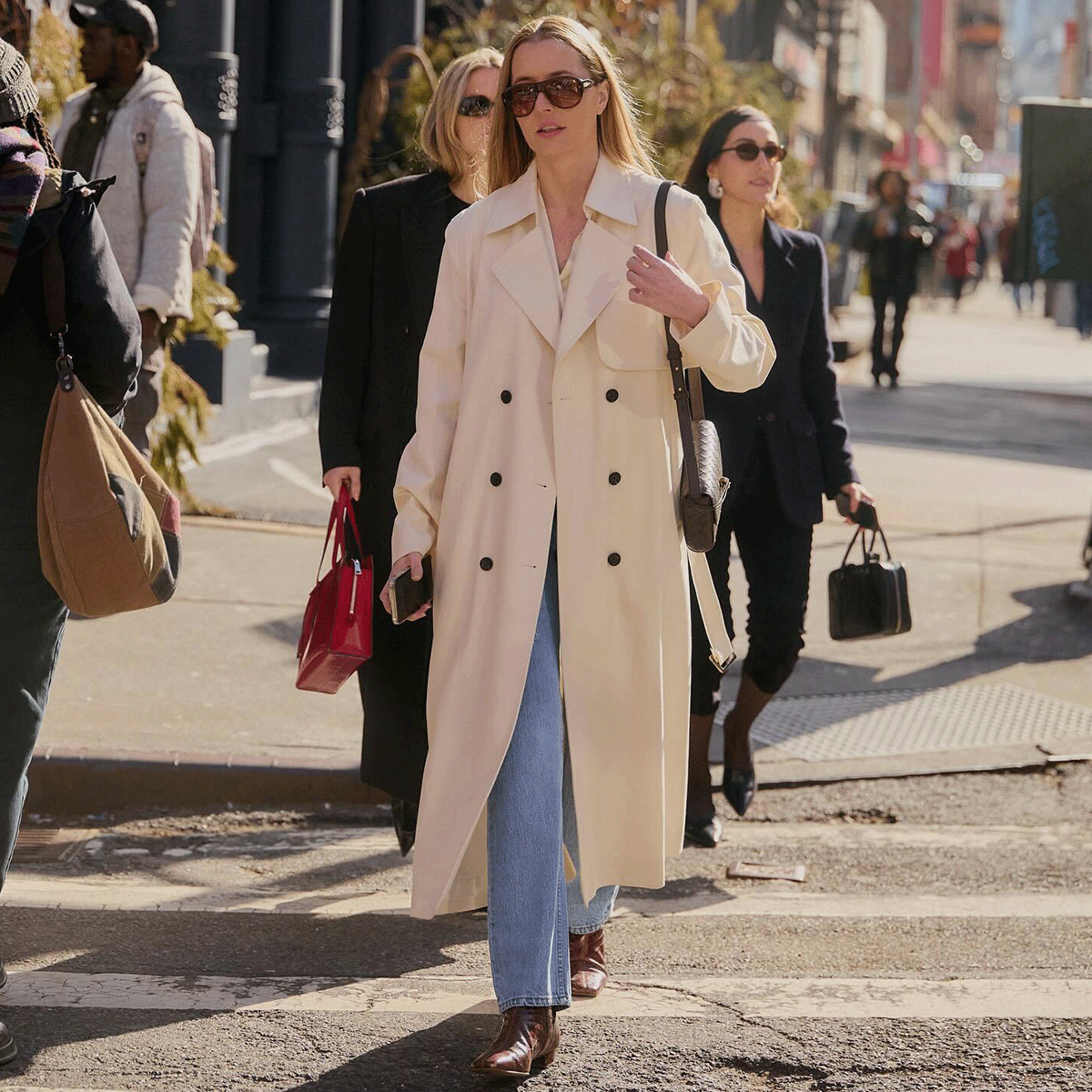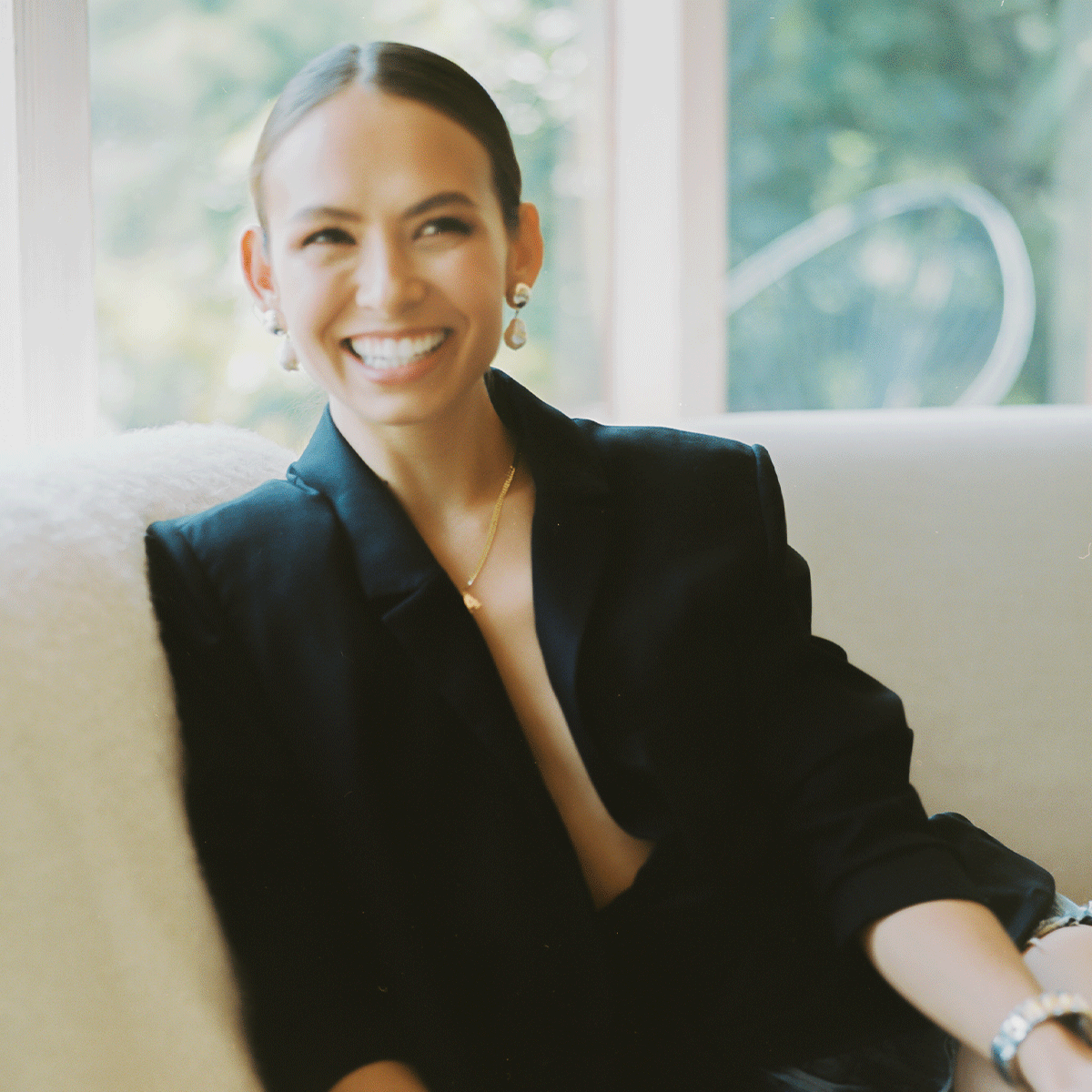Tina Craig (AKA Bag Snob) Is Absolutely Over Tiny Designer Bags
Welcome to our new podcast, Who What Wear With Hillary Kerr. Think of it as your direct line to the designers, stylists, beauty experts, editors, and tastemakers who are shaping the fashion-and-beauty world. Subscribe to Who What Wear With Hillary Kerr on Apple Podcasts and Spotify.

It's hard to remember a time when the word "influencer" wasn't a proper noun (nor a viable career) or when trends were strictly dictated by magazine editors. Long before Instagram-made celebrities were securing front row seats at New York fashion week, a handful of OG bloggers were pioneering fashion's transition from analog to digital. Among them were the likes of Bryan Boy, Susie Lau, and this week's podcast guest, Tina Chen Craig, often remembered by her online moniker Bag Snob. Since becoming one of the most well-known independent fashion voices, Craig has gone on to diversify her entrepreneur portfolio as a handbag designer, a stylist, the creator of Estate Five (a talent management agency), and the co-founder of the luxury skincare brand, U Beauty.
Although she's mostly hung up her blogger hat, her decades-long career of keeping her followers in the know about designer handbags still permeates today. Listen above to hear Craig share what inspired her to start her minimal beauty line and how she keeps her skin looking so hydrated, alongside tips and tricks to keep in mind when splurging on your next designer handbag.
First, can we talk about U Beauty, your company, which makes legitimately next-level products. I love the fact that you have replaced so many steps in one skincare routine. I feel like everyone was doing 47 things and you streamlined it. So for anyone who might not be familiar, can you tell me a little bit about why you started the line and how U Beauty really stands out from the competitive set?
Tina Craig: I was really inspired by my desire to simplify my really overly complicated routine. I think [Rachel] Strugatz was the one who unearthed the blog article from 2007, 14 years ago. She was like, "You started this whole craze!" I was boasting about my 13-step routine with at least 20 products. This was 14 years ago before Instagram, before K-beauty, J-beauty, whatever beauty it is that is trendy, and before social media, essentially.
And then as I went along, I realized, "Oh my God, there's so much cosmetic confusion. Like, I started it, I'm going to end this shit. It's too complicated." This confusion [was] exacerbated by people like us, editors, influencers, everyone. And everyone was feeling the same. Even when I was working with some of the best skincare brands and some of the best chemists in the industry, or doctors, I would say, "Isn't there a way to just simplify, but yet I'm not saying replace all the products in the world. Isn't there a way to just effectively treat your skin only where it needs it?" Everyone was like, "It's impossible what you're saying. It's impossible," until I had dinner with [U Beauty's co-founder Katie Borghese]. I knew she had been developing skincare lines for over 20 years. She told me about her lab partner which is a clinical-grade lab in Italy known for super-innovative technology. It's not only smart but [it also] treats the skin where it needs it; only treats the damage.
This incredible medical-grade lab [developed] the first product. I took it to Paris the last leg of Fashion Month. As you know, we all look like something the cat dragged in, right? I'll never forget, I was at Balmain or Chanel, and I think it might have been Aimee Song, she was like, "Mama, your skin's always been good, but it's like next level. What's happening?" And that's how it started. I said to Katie (at the time we were not partners, we had no brand, I was just testing this one product that's supposed to be the best product that I couldn't find), I said, "Can my friends try this?" So we call the lab and they made us more samples and I started handing it out in Tokyo and Paris wherever I went.
All of that was driven by my desire for something groundbreaking to do the work of multiple formulas in a single step. That's how the resurfacing compound was born. Throughout that test phase, I was collecting more and more friends who were privy to the best skincare in the world. It was people aged 20 to 73, it was people of different skin color, skin types, and 40% were men. Those are the type of people testing the products. Then that's when I realized, "Wow, this multitasking formula really is possible."
How do you assess the quality of a bag? I know that you've spoken about turning bags inside out. What are you looking for specifically? For our audience, what are any other tricks that you have that they should know?
TC: To me, it's all about tight seams. It's crazy how sloppy some of the most expensive bags are made on the interior, but also on the exterior. Don't just look for a logo. If quality, obviously, is as good on the inside as on the outside, then the quality is on point. But there are so many things you should look at like the gusset (between the two seams that hold the front and the back). A soft, structured bag will have a softer gusset, but then a structured bag should have perfect lines because you're really paying for the quality.
I don't believe in just paying for the name—I pay for the quality. I look at little details [like] how the bottom lines up. If there's even a stitch that's loose, I'm like "No, I'm not getting that." I'm hard on my bags. I don't believe in putting your bags away for a special day. I use everything because I want to enjoy it. I don't want to be that person that's like, "I have so many beautiful things but I just want to look at it." A well-made bag should be able to take all of that. Short answer long: tight seams.
What bags or silhouettes are really catching your eye right now?
TC: I love, love the Book Totes. I know it's so simple, but Dior Book Totes? So easy. I travel with them. You just throw everything inside, but yet because it's so structured it doesn't collapse you still see everything. And inside my Dior Book Tote, I have the Bottega pouch thing, a flat one so I can compartmentalize. I'm also looking at my Birkins again because it’s open. For a while when I was scared of germs during the whole pandemic, I just wanted to be able to reach in and grab something—grab my hand sanitizer, reach in and grab something to hand to my son. So that's what I'm still into right now. I'm really over if it's too softly structured. I have my bag collaboration. It's the Tina Craig x Nancy Gonzalez line. The jelly bags are so cute. I just like this tote feel that you could just throw things around.
Shop U Beauty
This interview has been edited and condensed for clarity. Next up, check out our previous episode featuring celebrity stylist Rob Zangardi and Mariel Haenn.
Ray Lowe is a contributing editor for Who What Wear. She's spent the last decade living in New York, but now that she professionally works from home, she's slowly been going back to her roots by splitting time between NYC and L.A. A year ago, she left a four-year stint as a fashion editor for Refinery29 to explore the freelance life. Nowadays, she does just about everything from penning online articles (for Who What Wear, Refinery29, Elle, Cosmo, and many more) to writing scripts, styling, and finding ways to fuse her love for both Disney and fashion. Her main beat is fashion (trends, emerging brands, affordable finds, you name it), but you may find her dropping in with a beauty story every now and then. As for her personal style, she'd best describe it as a balanced blend of basics and contemporary trends, often with a dash of Mickey Mouse thrown in for good measure. In her spare time, she can be found coddling my pets (a French bulldog and a rescue cat), curating travel itineraries for her friends, scrolling through Instagram for up-and-coming brands, and watching so-bad-they're-good films.
-
 Founder Violette Serrat on How Violette_FR Went From Having a Cult Following to Launching in Sephora
Founder Violette Serrat on How Violette_FR Went From Having a Cult Following to Launching in SephoraSchool is in session.
By Madeline Hill
-
 Stylist Brad Goreski on His Whirlwind Year of Red Carpet Looks for Demi Moore
Stylist Brad Goreski on His Whirlwind Year of Red Carpet Looks for Demi MoorePlus, how he brought body horror to the red carpet.
By Claire Schmidt
-
 The Top Trends From Fashion Month, According to Our Editors
The Top Trends From Fashion Month, According to Our EditorsThere's a lot to keep track of.
By Madeline Hill
-
 The White Lotus Costume Designer Shares How She Puts Together Those Iconic Looks
The White Lotus Costume Designer Shares How She Puts Together Those Iconic LooksPlus, how she got her start in entertainment.
By Madeline Hill
-
 Our Editor Shares Her 2025 Spring Fashion Predictions
Our Editor Shares Her 2025 Spring Fashion PredictionsPlus, the items you can incorporate into your rotation.
By Madeline Hill
-
 Why Sporty & Rich Founder Emily Oberg Is Launching a Sexual Wellness Line
Why Sporty & Rich Founder Emily Oberg Is Launching a Sexual Wellness LineIt's time for something new.
By Madeline Hill
-
 An Award-Season Debrief With Our Editors, From Trends to Top Looks
An Award-Season Debrief With Our Editors, From Trends to Top LooksPlus, we discuss the stylists who've been at the top of their game all season long.
By Claire Schmidt
-
 2025 Bridal Predictions From the Minds Behind Wiederhoeft and LOHO Bride
2025 Bridal Predictions From the Minds Behind Wiederhoeft and LOHO BrideMaximalism is in.
By Madeline Hill





